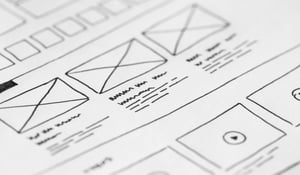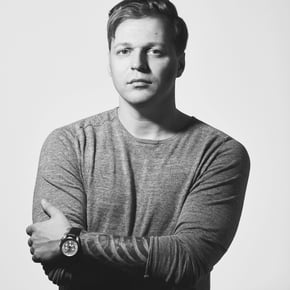UX design tools and techniques have evolved rapidly over the years. The new normal of hyper-agile organizations with distributed teams has put lots of pressure on Figma, Sketch, Adobe, and other design tools to keep up with the demand. And they certainly have. Working remotely in an agile team as UX or UI designer has never been easier. The barrier of getting started with any design tool keeps getting lower, and the same tools are available to everyone at any time.
What we learned from Experience Design Summit 2021
In March, the UX and design team at Centigo had the opportunity to take part in the Experience Design Summit 2021 to learn from the world's leading UX designers. We listened to speakers from Google, Uber Eats, Coinbase, and many more during a digital event. Between the keynotes, we got the opportunity to mingle with other UX designers from all over the world.
No doubt, some companies were more interesting than others. When a designer from TikTok took place at some of the digital mingle table or Google entered the digital stage, we were all eager to get the magic key to success. We quickly realized that the people designing these digital products that we all use regularly seemed to be quite human after all. They were designers just like us, passionate about making the best possible experience for the user in every situation.
So, what design tools and methods do these "human" designers at the Big Tech use?
Well, the easy answer is: probably the same as you do. The financial power and the technical resources and capabilities of these companies are, of course, unbeatable. Still, most of the time, we target the same user and have the same toolkit at our hands even though the Big Tech designers obviously are very talented and good at their craft. Here are some of the things we learned from them during the event.
- Put decision-makers into the context. Often the people making the final call on a product have not experienced the user journey in real life. Make the decision-makers experience the user pain points, even if that means delivering food by bike themselves.
- You don't need to be the user. The old saying of "you are not the user" is a valuable reminder to any product developer or UX designer. Designing for a niche product with specialist users (not you) might be an advantage as you see the situation from the outside. As long as you can empathize with the user, you don't need to be one.It is a good thing not to know sometimes.
- Less time spent = more satisfied user? For a long time, many digital products were built to keep users occupied for as long as possible. What if this is about to change? We see an increased effort put into reducing screen time, and for B2B products and administrative tools, this is the norm. What demands do this put on us as designers to help the user to get in-and-out as quickly as possible?
How come UX designers work so similarly?
How come top designers from some of the largest tech companies seem to work in the same way a designer in any small start-up. We think the answer lies in a shared mission to create the best user experience possible regardless of the context. The tools and methods used to do so will continue to change, but the mission will remain. After all, we are all humans in the end.
Centigo Studios
Centigo Studios is the design team at Centigo. We support our clients in product development projects with UX and UI design. We also help our clients create design-driven processes to ensure high usability in the product built.


